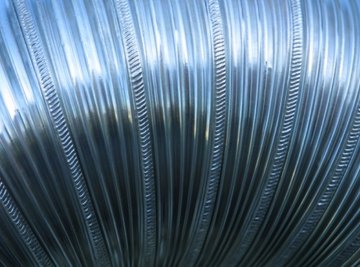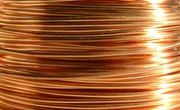
Metallic objects fall under subdivisions of various metals. One of the largest categories is nonferrous metals. The chemical composition and properties of nonferrous metals can be an advantage in certain applications. However, some of the properties that nonferrous metals possess are considered a disadvantage and may exclude this metal from certain uses and applications.
Nonferrous Metals
Nonferrous metals are all alloys or metals that do not contain any iron. These metals are the opposite of ferrous metals, which are all metals that contain a percentage of iron. Unlike ferrous metals, nonferrous metals do not rust or oxidize. The only metal that is not considered nonferrous in the periodic table of elements is iron. A few examples of nonferrous metals are copper, tungsten steel, brass, chromium, titanium, nickle and aluminum.
No Magnetic Attraction
Unlike ferrous metals, nonferrous metals are not magnetically attractive. This can be a disadvantage since it excludes this metal from any application where magnetism is necessary or is an advantage. A few examples where the magnetic attraction of metals is used are in computer disc drives, automotive starters, audio speakers, microphone assemblies, some computer printers, and some vehicle motors. Nonferrous metals are useless in any of these applications because of the lack of magnetic attraction.
Light-weight
Nonferrous metals typically are light-weight and have limited strength capabilities. This prevents these metals from being used in any application where strength or heft is necessary. Because of this property, nonferrous metals are generally not used in industrial settings or industrial equipment. Nonferrous metals are also not typically used in decorative hardware or any types of tools or equipment. Because ferrous materials are stronger, they are typically used in industrial settings and areas where strength is important, such as in cast-iron fences and manhole covers.
Cost
On average, nonferrous metals cost more than ferrous metals, although the price can vary according to the metal. Industries or companies needing nonferrous metals for applications face a disadvantage compared to those companies using ferrous metals, because the cost is higher. The higher cost of metal can raise production costs for companies. For example, according to Earthworks Recycling, as of the time of publication, yellow brass, which is a nonferrous metal, costs $1.65 per pound. Iron, which is a ferrous metal, costs 35 cents per pound.
References
About the Author
Dianne Christensen began writing professionally in 2003 for the "Muskegon Chronicle" in Muskegon, Mich. She has a Bachelor of Science in journalism from Grand Valley State University in Allendale, Mich.
Photo Credits
Photos.com/Photos.com/Getty Images
